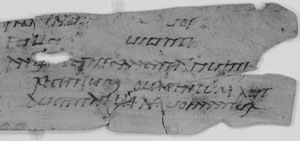Easy homemade cheese, perfect base for lots of yummy seasonings, like moretum and hypotrimma. I got this recipe from Vrouw Lijsbet de Kuekere, who got it from this pdf about 14th-15th c cheese making.
You will need:
1 gallon whole milk
1 pint heavy cream
1/3 c. apple cider vinegar
cheesecloth
1. Combine milk and cream in a large pot. Stir pretty much constantly while waiting for it to heat up on the stove. You want this mixture to come juuuuuuust to a boil.
2. Once it starts to boil, turn off the heat and slowly add the vinegar. Stir only a few times to distribute evenly, then leave it alone for 5-10 minutes.
3. Line a colander with the cheesecloth (you will want a lot of overhang). Pour the milk mixture into the colander. The curds will get caught in the cheesecloth.
4. Once cool enough to handle, tie up the ends of the cheesecloth and hang (I’ve hung it off the sink faucet, and I’ve also hung it off a hanger that was on a hook over the sink). The extra whey will drain. Leave this here for at least 1-2 hours.
5. Take cheese out of cheesecloth and empty into a bowl. If it is cool enough to handle, this is a good time to add seasoning. The cheese gets a little harder when you put it in the fridge, so to mix evenly, room temp is best.
